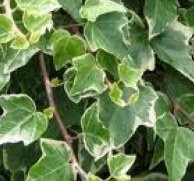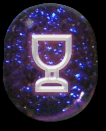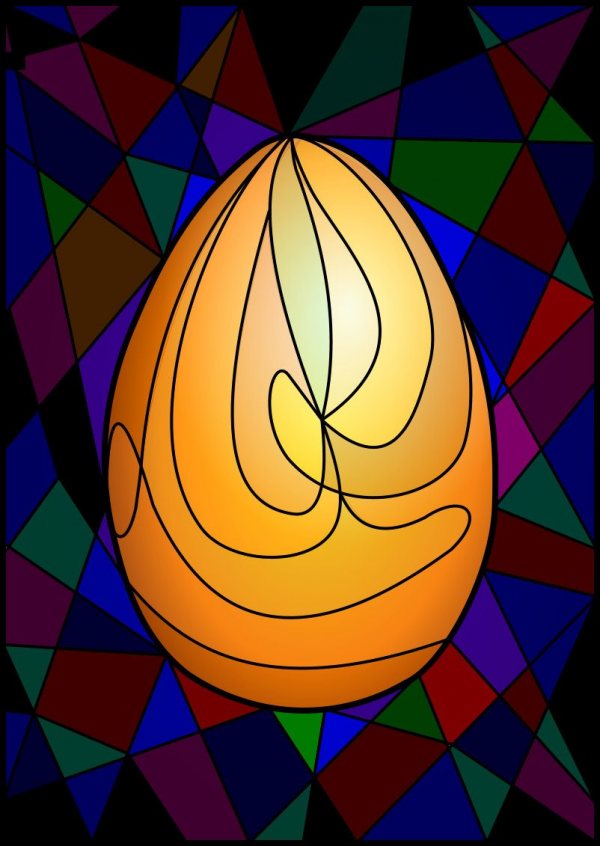Ivy
By the ancients the Ivy was dedicated to Bacchus, whose statues were crowned with a wreath of the plant, under the name Kissos, and whose worshippers decorated themselves with its garlands.
Added Aug 21, 2010
| 6,151 Reads
This common, and very familiar little herb, with its small Ivy-like aromatic leaves, and its striking whorls of dark blue blossoms conspicuous in early spring time, comes into flower pretty punctually about the third or fourth of April, however late or early the season may be. Its name is attributed to the resemblance borne by its foliage to that of the true Ivy (Hedera helix). The whole plant possesses a balsamic odour, and an aromatic taste, due to its particular volatile oil, and its characteristic resin, as a fragrant labiate herb. It remaineth green not only in summer, but also in winter, at all times of the year. From the earliest days it has been thought endowed with singular curative virtues chiefly against nervous headaches, and for the relief of chronic bronchitis. Ray tells of a remarkable instance in the person of a Mr. Oldacre who was cured of an obstinate chronic headache by using the juice or the powdered leaves of the Ground Ivy as snuff: Succus hujus plantoe naribus attractus cephalalgiam etiam vehementissimam et inveteratam non lenit tantum, sed et penitus aufert; and he adds in further praise of the herb: Medicamentum hoc non satis potest laudari; si res ex usu oestimarentur, auro oequiparandum. An infusion of the fresh herb, or, if made in winter, from its dried leaves, and drank under the name of Gill tea, is a favourite remedy with the poor for coughs of long standing, accompanied with much phlegm. One ounce of the herb should be infused in a pint of boiling water, and a wineglassful of this when cool is to be taken three or four times in the day. The botanical name of the plant is Nepeta glechoma, from Nepet, in Tuscany, and the Greek gleechon, a mint. Resembling Ivy in miniature, the leaves have been used in weaving chaplets for the dead, as well as for adorning the Alestake erected as a sign at taverns. For this reason, and because formerly in vogue for clearing the ale drank by our Saxon ancestors, the herb acquired the names of Ale hoof, and Tun hoof ("tun" signifying a garden, and "hoof" or "hufe" a coronal or chaplet), [285] or Hove, "because," says Parkinson, "it spreadeth as a garland upon the ground." Other titles which have a like meaning are borne by the herb, such as "Gill go by the ground," and Haymaids, or Hedgemaids; the word "gill" not only relating to the fermentation of beer, but meaning also a maid. This is shown in the saying, "Every Jack should have his Gill, or Jill"; and the same notion was conveyed by the sobriquet "haymaids." Again in some districts the Ground Ivy is called "Lizzy run up the hedge," "Cat's-foot" (from the soft flower heads), "Devil's candlesticks," "Aller," and in Germltny "Thundervine," also in the old English manuscripts "Hayhouse," "Halehouse," and "Horshone." The whole plant was employed by our Saxon progenitors to clarify their so-called beer, before hops had been introduced for this purpose; and the place of refreshment where the beverage was sold bore the name of a "Gill house." In A Thousand Notable Things, it is stated, "The juice of Ground Ivy sniffed up into the nostrils out of a spoon, or a saucer, purgeth the head marvellously, and taketh away the greatest and oldest pain thereof that is: the medicine is worth gold, though it is very cheap." Small hairy tumours may often be seen in the autumn on the leaves of the Ground Ivy occasioned (says Miss Pratt) by the punctures of the cynips glechomoe from which these galls spring. They have a strong flavour of the plant, and are sometimes eaten by the peasantry of France. The volatile oil on which the special virtues of the Ground Ivy depend exudes from small glandular dots on the under surface of the leaves. This is the active ingredient of Gill tea made by country persons, and sweetened with honey, sugar, or liquorice. Also the expressed juice of the herb is equally effectual, being diaphoretic, diuretic, and somewhat astringent against bleedings. Gerard says that in his day "the Ground Ivy was commended against the humming sound, and ringing noises of the ears by being put into them, and for those that are hard of hearing. Also boiled in mutton broth it helpeth weak and aching backs." Dr. Thornton tells us in his Herbal (1810) that "Ground Ivy was at one time amongst the 'cries' of London, for making a tea to purify the blood," and Dr. Pitcairn extolled this plant before all other vegetable medicines for the cure of consumption. Perhaps the name Ground Ivy was transferred at first to the Nepeta from the Periwinkle, about which we read in an old distich of Stockholm:— "Parvenke is an erbe green of colour, In the Organic Materia Medica of Detroit, U.S.A., 1890, it is stated, "Painters use the Ground Ivy (Nepeta glechoma) as a remedy for, and a preventive of lead colic." An infusion is given (the ounce to a pint of boiling water)—one wineglassful for a dose repeatedly. In the relief which it affords as a snuff made from the dried leaves to congestive headache of a passive continued sort, this benefit is most probably due partly to the special titillating aroma of the plant, and partly to the copious defluxion of mucus and tears from the nasal passages, and the eyes.
Added Aug 21, 2010
| 6,151 Reads
Share The Magic ...
The GoE MONEY!!! Course - A Course In Real MONEY MAGIC!
|





















